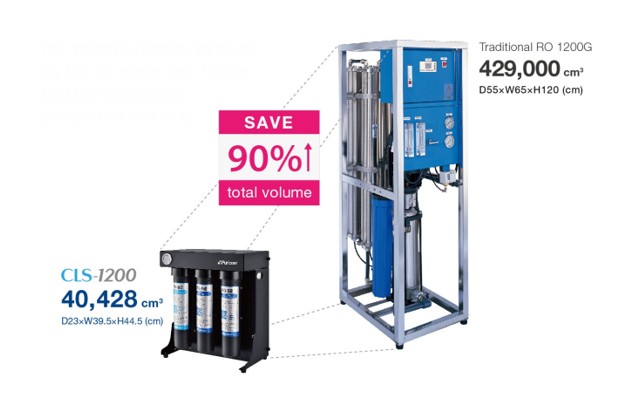Direct Flow Reverse Osmosis Drives the Future of Water Treatment Industry
Driving the Future of RO Technology
There is no doubt that in this present generation, nearly all forms of technology are advancing at rates never seen before in history. In the computer industry, Moore's Law states that the number of transistors on a microchip doubles approximately every two years, while the cost of computers is halved. Since the development of Reverse Osmosis (RO) technology in 1966, RO has also seen many great advancements in production capacity, efficiency, and cost reduction.
Over its 40-year history, Puricom has consistently kept pace with these developing technologies to stay at the cutting edge of the Water Filtration Industry, bringing new and innovative products to market.
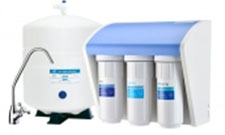
Challenges in Designing RO Membranes
In the past, for residential RO filter systems, due to the slow flow rates of the RO membranes, it was necessary to collect the purified water in a storage tank to have enough water available when needed. A system that could produce an acceptable flow rate without a storage tank would be too large and bulky to fit into most household cabinets.
One of the major challenges was to develop RO membranes compact enough to use in a household environment, with high flow rates that did not compromise the quality of the purified water.Fortunately, we have seen many advances in membrane technology over the past 10 to 15 years which have made it possible to have high-capacity RO systems that are compact enough to fit into very limited spaces.
How to Solve the Storage Tank Dilemma?
What is Direct Flow Reverse Osmosis?
There are RO membranes now available that have production capacities fast enough to eliminate the need for a storage pressure tank in most residential units. These systems are referred to as “Direct Flow” or “Tankless” RO systems. Puricom has been using high flow membranes in designing a range of direct flow RO filtration systems.
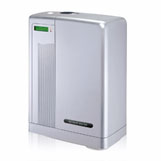
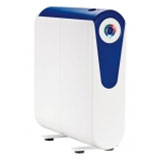
Direct Flow Reverse Osmosis, the Trend is Here
Over the past 15 years, Puricom has designed and manufactured Direct Flow systems for many RO applications. From its early beginnings, the original Puricom CMJ DMD Direct Flow system was the most compact residential Direct Flow RO system at the time. It was specially designed for use in Japan, where any available space was had at a premium. At the time the CMJ DMD delivered a continuous flow rate of 1.7 liters per minute, a new milestone for a residential RO system.
Today, the Puricom CIJ direct flow RO system gives a flow rate of 3.0 lpm, making this economical and versatile system a standard in homes and restaurants worldwide.
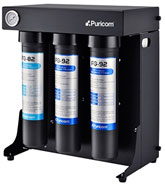
Compact Commercial Direct Flow RO
Puricom CLS-1200- Two Steps Forward
Besides residential filtration systems, Puricom has designed large commercial and industrial filtration systems such as the Guam Municipal Power Plant cooling system. Understanding this broad range of possibilities, it was a logical next step up from residential systems to design a commercial system that could provide a sufficient production rate to be used in restaurants, hospitals, laboratories, etc.
The CLS-1200 commercial direct flow reverse osmosis system was designed to provide an extremely compact, high-flow system that could be easily installed anywhere. Because there is no tank, this system is very lightweight. The tubing is designed for quick easy connections, making it portable and easy to install in nearly any location. Its FG–series quick-change cartridge type filters make maintenance a breeze. The CLS 1200 is the system that has found its home in many locations requiring a large flow of pure water with limited space.
The difference between the traditional big flow RO system and Puricom 1,200 GPD RO system. (Compact and efficient.)
